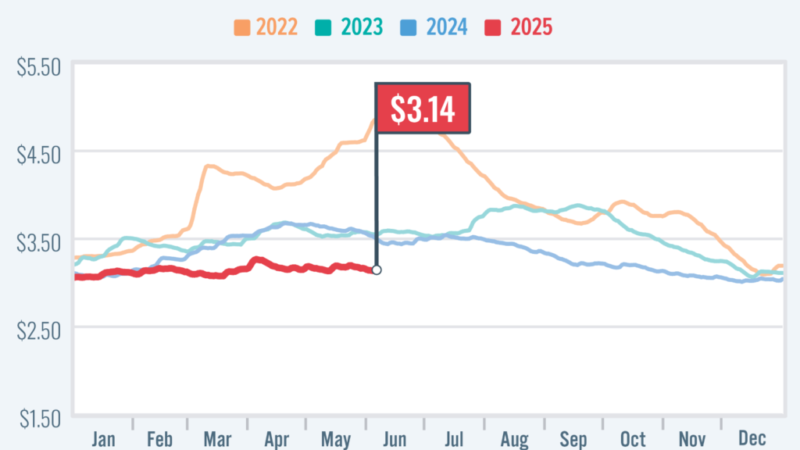RVIA Webinar Adds Some Clarity to California Regulations – RVBusiness – Breaking RV Industry News
EDITOR’S NOTE: It is almost a fool’s errand to summarize this incredibly complex issue in a single article. While RVBusiness will continue to provide coverage of this ongoing topic, RVIA has been providing regular updates on this issue as they become available. In addition, RVIA will post a recording of Tuesday’s webinar on its website later this week.
Recent action in California that would severely handicap motorhome sales in that state and more than a handful of others has ignited a flurry of controversy. Making matters worse, the issue is as confusing as it is complex, with misinformation and hyperbole only fanning the flames.
Essentially, the California Air Resources Board (CARB) has a goal of eventually moving California to a zero-emission vehicular (ZEV) economy. To reach this goal, CARB has enacted several regulations including the Advanced Clean Truck (ACT), which impacts chassis manufacturers, and the Omnibus Low NOx rule, which has limited the number of diesel engines that can be sold in medium and heavy-duty vehicles in California. A third action is the Advanced Clean Fleets Regulation, which will require that all medium- and heavy-duty vehicles, including motorhomes, that are sold into California be zero-emission vehicles by 2036.
This confluence of regulations could impact the availability of motorhomes in California beginning Jan. 1, but there’s so much more to this issue.
To offer as much clarity on this topic as can be had, the RV Industry Association (RVIA) conducted an hour-long webinar Tuesday. Hosted by Monika Geraci, RVIA’s director of public relations and communications, the webinar included RVIA Vice President of Government Affairs Jason Rano and Mike Ochs, who serves as RVIA’s director of state government affairs.
The first half of the webinar featured background on the issue, while the final 30 minutes was dedicated to questions from those tuning in.

Calling it a “fluid and ongoing situation,” Rano emphasized that these regulations do not constitute a “ban” on motorhome sales in California, as has been widely reported by many media outlets.
As revealed during the webinar, motorhomes can still be sold and registered either through utilization of the ZEV credit market or generating a carry forward deficit that will have to be offset by credits within three years.
In either case, the ZEV credits would be obtained and utilized by chassis manufacturers. Motorhome manufacturers could secure ZEV credits and transfer them to chassis manufacturers, Ochs pointed out, but it is ultimately up to chassis manufacturers whether they implement those credits for RVs or for other medium- and heavy-duty vehicles in their fleets.
“Another important consideration is that chassis manufacturers who produce fewer than 500 medium- and heavy-duty vehicles being sold into California annually are exempted from this regulation,” Rano added. “That is one potential workaround – though, obviously, 500 chassis is not sufficient to supply all the motorhomes that are being shipped into California.”
The carry forward deficit is another potential work-around, Rano added. If chassis manufacturers don’t sell enough ZEV chassis or don’t have enough ZEV credits, they have the next three years to make up that deficit. Rano noted that three-year timeframe was an improvement as the regulation previously only allowed a one-year makeup period.
“I think it’s important to note that the makeup period begins immediately following the model year in which the deficit happened,” Rano said. “So, if there is a deficit at the end of the manufacturer’s 2025 model year, the manufacturer would have ’26, ’27 and ’28 model years to make up the shortfall, and then they would have to be made up by the end of that three years.
“So, this is an opportunity for our industry to continue to deliver and for consumers to continue to purchase and register new motorhomes,” he noted. “It’s not a fail-safe – chassis manufacturers still have to make up the credit deficit within three years – but it’s an important consideration and an important ability to continue to deliver new motorhomes into California.”

Yet another factor to this issue is there are other states that are in line to follow California’s regulations. According to Ochs, New Jersey, New York, Oregon and Washington are set to implement the regulations beginning with the 2025 model year, while Vermont has targeted the 2026 model year and Colorado, Maryland, New Mexico and Rhode Island have circled the 2027 model year.
While these states must, by law, implement all of these regulations – it’s an all or nothing approach – they do have the flexibility of delaying the implementation. Several states, including Oregon and New York, have indicated they are considering such a course of action.
Lastly, Ochs noted that RVIA in active discussion with CARB officials. He was encouraged by an upcoming meeting that was requested by CARB.
“For those of us who have been working on CARB issues for a while, this has been somewhat of a revelation. It’s the first time I can remember CARB coming to us and asking us for a meeting so we have pledged to continue working with them to see if we can’t find a solution that is fair and equitable to all parties,” Ochs said.
CARB is also planning a public workshop sometime later this month on the Omnibus Low NOx rule, he added. This would be in preparation for the board hearing scheduled tentatively for November of 2025.







